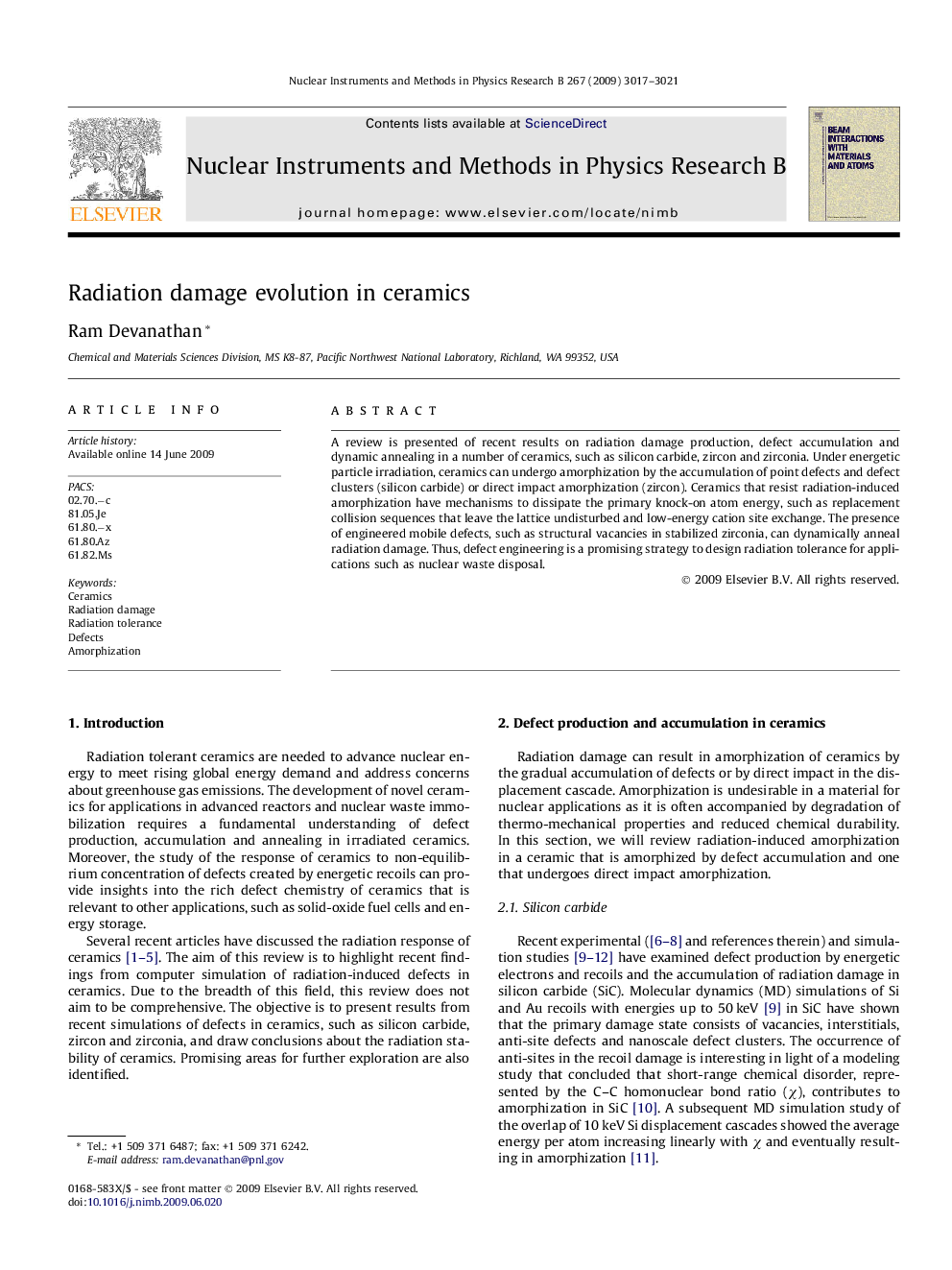| Article ID | Journal | Published Year | Pages | File Type |
|---|---|---|---|---|
| 1686981 | Nuclear Instruments and Methods in Physics Research Section B: Beam Interactions with Materials and Atoms | 2009 | 5 Pages |
A review is presented of recent results on radiation damage production, defect accumulation and dynamic annealing in a number of ceramics, such as silicon carbide, zircon and zirconia. Under energetic particle irradiation, ceramics can undergo amorphization by the accumulation of point defects and defect clusters (silicon carbide) or direct impact amorphization (zircon). Ceramics that resist radiation-induced amorphization have mechanisms to dissipate the primary knock-on atom energy, such as replacement collision sequences that leave the lattice undisturbed and low-energy cation site exchange. The presence of engineered mobile defects, such as structural vacancies in stabilized zirconia, can dynamically anneal radiation damage. Thus, defect engineering is a promising strategy to design radiation tolerance for applications such as nuclear waste disposal.
